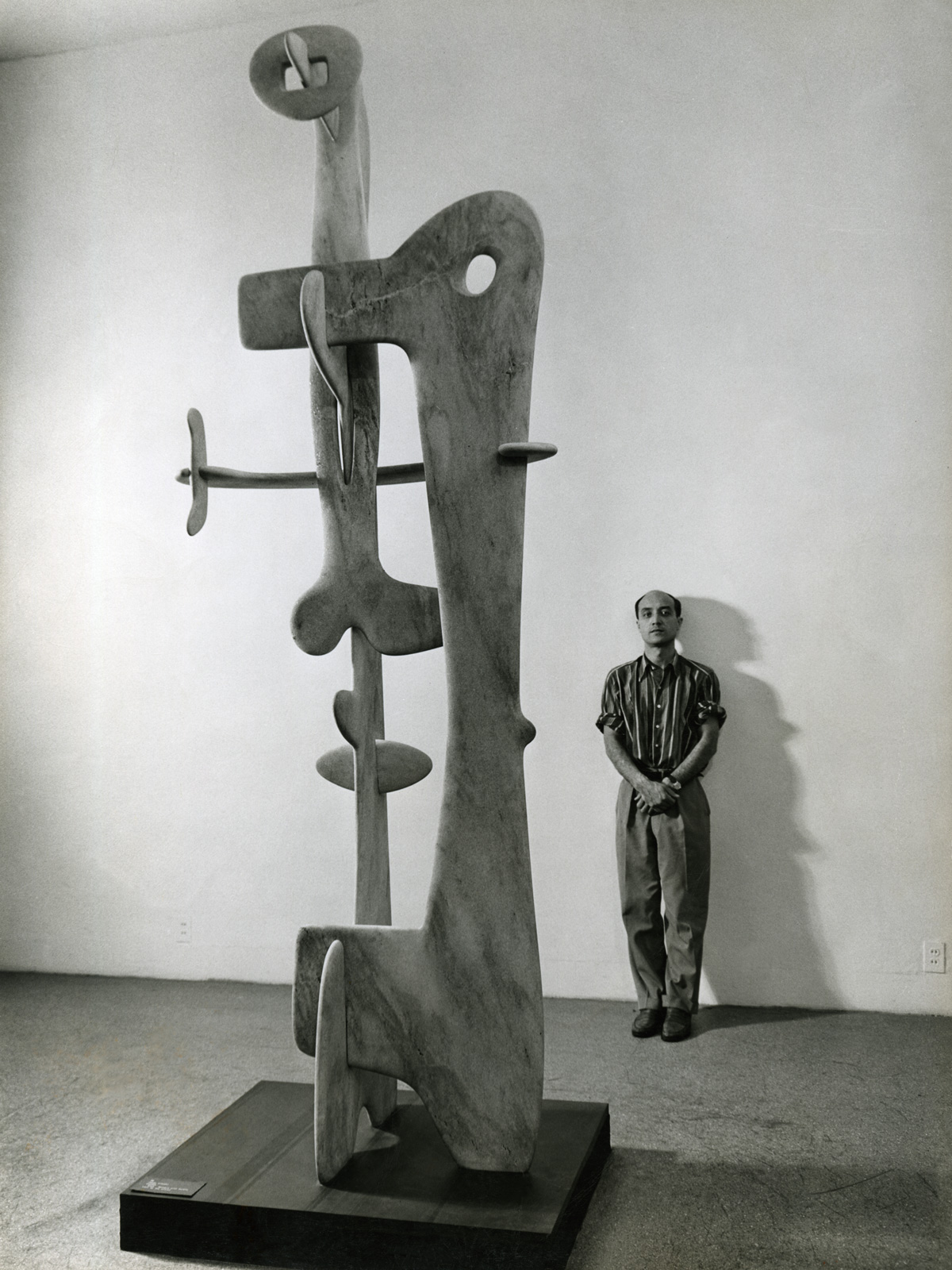In hindsight, the arc of Isamu Noguchi’s solo exhibitions seems like an active attempt to confound any public perception of Noguchi as an artist with a single known style. Early in his career, his gallerists were able to assert their dominance in the artist-dealer relationship, judiciously selecting examples of Noguchi’s previous portraits or brush drawings done in Beijing to convey the image of Noguchi as a wide-ranging talent—the figurative work softened the shock of the avant-garde work it accompanied. When left to his own devices, however, Noguchi embraced a counterintuitive, go-for-broke approach, eagerly exhibiting his most recent work, even if that work showed no immediately discernible aesthetic thread to his last body of work. Noguchi effectively treated every exhibition as his last, seemingly going so far as to follow through on that ultimatum in 1949, when he abandoned his studio in New York for a year of travel just a few months after his exhibition at the Egan Gallery in New York. Only in the 1960s—his fourth decade working as an artist—does a cohesive picture begin to emerge, and that is partly because he was the reluctant subject of his first career retrospective. As his career matured, his expectations changed as his studio practice did, and Noguchi actively resisted the urge to show his newest sculpture in a timely manner. As he noted in an interview in the early 1970s: “it’s no good to be ahead of time. In fact, most of my sculptures today—I wait as long as possible [to show]. The tendency, of course, is to show things as soon as possible before somebody else does a similar thing. But doing the stone things, it takes so long to do one anyway that you can’t beat them …”1 By this point in his career, Noguchi realized that his greatest asset, after all of his struggles, was the freedom to do what he chose, when he chose.




























































